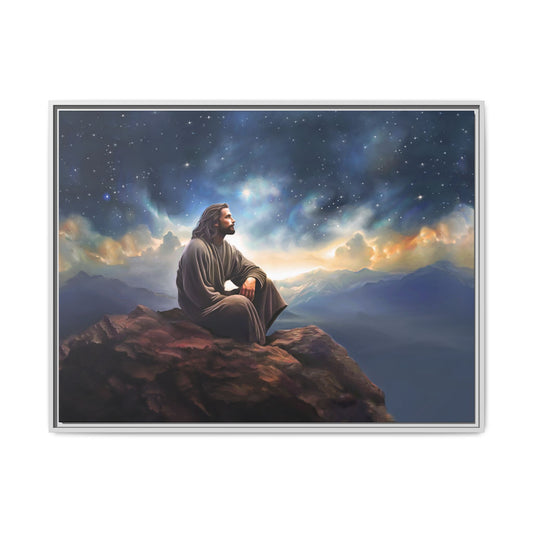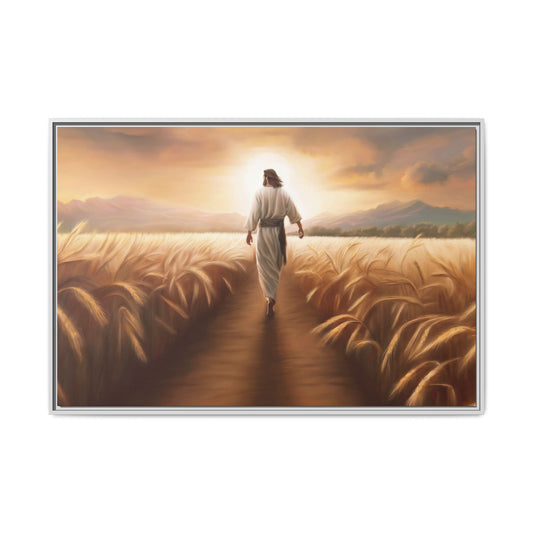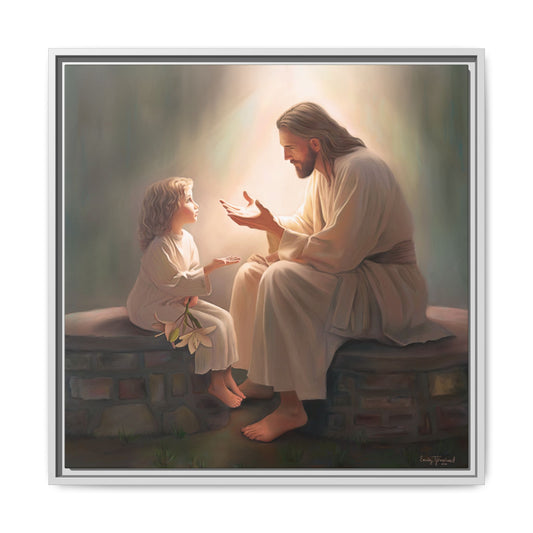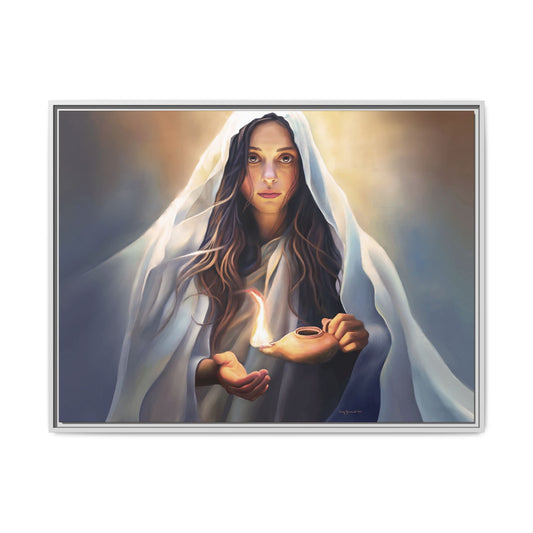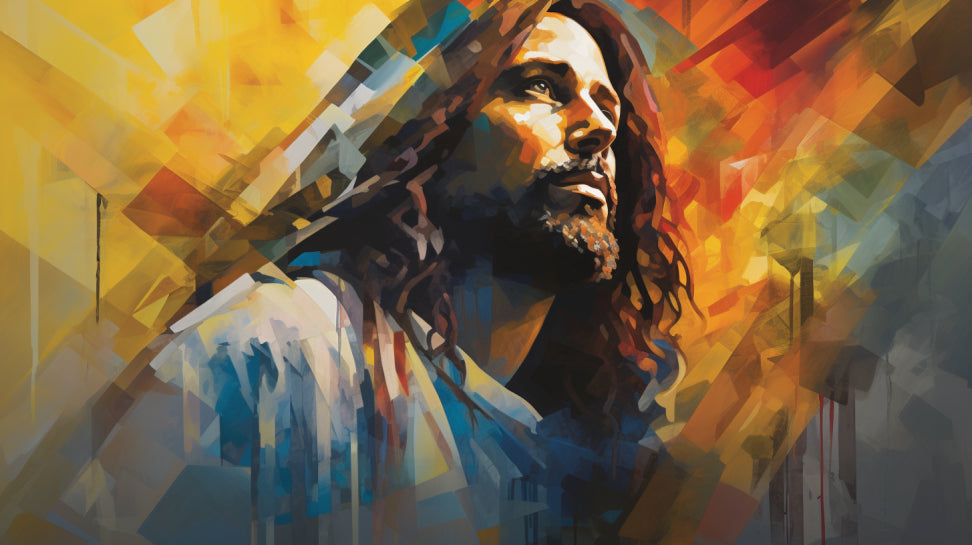
Jesus Middle Eastern Art
Share
 The portrayal of Jesus in Middle Eastern art is a captivating journey through cultural, historical, and religious influences, offering a unique perspective on the identity and representation of this central figure. From ancient mosaics to modern paintings, the artistic renditions of Jesus in the Middle East provide a window into the complex interplay between spirituality, artistic expression, and regional traditions. Let's explore how these depictions of Jesus in Middle Eastern art have shaped our understanding of his significance and continue to resonate with audiences across the globe.
The portrayal of Jesus in Middle Eastern art is a captivating journey through cultural, historical, and religious influences, offering a unique perspective on the identity and representation of this central figure. From ancient mosaics to modern paintings, the artistic renditions of Jesus in the Middle East provide a window into the complex interplay between spirituality, artistic expression, and regional traditions. Let's explore how these depictions of Jesus in Middle Eastern art have shaped our understanding of his significance and continue to resonate with audiences across the globe.
What the Scriptures Say:
Based on historical records and the biblical narrative, Jesus was born and lived in the region known today as the Middle East, specifically within the boundaries of modern-day Israel/Palestine. While the Bible does not provide a detailed physical description of Jesus, the cultural, historical, and geographical details it offers place Jesus firmly within the Middle Eastern milieu of the 1st century. Below are scriptural references and contexts that underscore Jesus's identity as a person who lived and ministered in the Middle East, reflecting the customs, language, and ethnic backgrounds of that region.Matthew 2:1: 'After Jesus was born in Bethlehem in Judea, during the time of King Herod, Magi from the east came to Jerusalem.' This scripture highlights Jesus's birthplace in Bethlehem, a town in Judea, positioning Jesus within the historical and geographical context of the Middle East. Luke 2:4-7: 'So Joseph also went up from the town of Nazareth in Galilee to Judea, to Bethlehem the town of David, because he belonged to the house and line of David. He went there to register with Mary, who was pledged to be married to him and was expecting a child.' The census that brought Joseph and Mary to Bethlehem reflects the Roman administrative practices of the time, further anchoring Jesus's early life in the context of Roman-occupied Judea. John 4:9: 'The Samaritan woman said to him, "You are a Jew and I am a Samaritan woman. How can you ask me for a drink?" (For Jews do not associate with Samaritans.)' Jesus's interaction with the Samaritan woman at the well illustrates the ethnic and religious divisions present in the region, demonstrating Jesus's Middle Eastern heritage and His challenge to the social norms of His time. Matthew 26:73: 'After a little while, those standing there went up to Peter and said, “Surely you are one of them; your accent gives you away.”' This reference to Peter's accent during Jesus's trial before His crucifixion suggests the regional dialects and languages of the area, implying that Jesus, too, would have spoken in such a manner identifiable to the region. Luke 4:16: 'He went to Nazareth, where he had been brought up, and on the Sabbath day he went into the synagogue, as was his custom. He stood up to read.' Jesus's participation in synagogue services, following Jewish religious practices, places Him within the Jewish cultural and religious framework of the Middle East. Acts 2:7-11: Describes the astonishment of the crowd when each hears the apostles speaking in his own language during Pentecost, listing various regions including Judea and parts of the Middle East, indicating the diverse but interconnected cultural and linguistic landscape Jesus and His disciples were part of. These scriptures not only place Jesus within the specific geographic and cultural context of the Middle East but also highlight the interactions and practices that would have been common in His lifetime. Through His teachings, movements, and the very nature of His earthly ministry, Jesus embodies the characteristics of a person living in the 1st-century Middle Eastern world.
The question of Jesus's ethnicity and cultural background, while not detailed explicitly in the Bible, is illuminated by the historical and geographical context provided by the scriptures. This context supports the understanding of Jesus as a Middle Eastern figure, deeply embedded in the customs, languages, and societal structures of His time.

Jesus in Middle Eastern Art
Let's explore how Jesus is depicted in Middle Eastern art and the unique characteristics that distinguish these portrayals. Middle Eastern Jesus portraits often incorporate rich symbolism and imagery that reflect the cultural and religious influences of the region. We'll also consider how Middle Eastern culture has shaped the artistic representations of Jesus, offering insights into the diverse interpretations of this central figure.
Examining Jesus' portrayal in Middle Eastern art and its distinct characteristics
Jesus' portrayal in Middle Eastern art captures the cultural and religious significance of his figure within the region.- Artists often depict Jesus with dark, wavy hair and a compassionate expression, reflecting the Middle Eastern features prevalent in the region.
- The warm, earthy tones used in the artworks evoke a sense of connection to the land and its people.
- The use of traditional motifs and patterns in the background adds depth and symbolism to the portrayal, linking Jesus to the rich cultural heritage of the Middle East.
- The emphasis on humility and kindness in the artwork mirrors the values cherished in Middle Eastern societies, creating a relatable and reverent depiction of Jesus.
Symbolism and imagery in Middle Eastern Jesus portraits
In Middle Eastern Jesus portraits, symbolism and imagery convey profound cultural and religious significance, enriching the representation of Jesus within the region. Middle Eastern art often uses symbolic elements to convey deeper meanings. The following table highlights some common symbols and their significance in Middle Eastern Jesus portraits:| Symbol | Imagery | Meaning |
|---|---|---|
| Olive Tree | Depicted in the background | Symbolizes peace, fertility, and prosperity |
| White Robe | Worn by Jesus in many portraits | Represents purity and divine nature |
| Hand Gestures | Various hand positions | Conveys blessings, teaching, or divine authority |

Influence of Middle Eastern culture on artistic representations of Jesus
The influence of Middle Eastern culture on artistic representations of Jesus is evident in the use of symbolic elements and imagery that convey profound cultural and religious significance.- Iconographic Symbols: Artists often incorporate symbols such as the cross, the crown of thorns, and the olive branch, which so many hold religious and cultural meanings.
- Traditional Garments: Jesus is often depicted wearing robes and garments commonly worn in the Middle East, reflecting the cultural attire of the region.
- Landscape and Architecture: Artistic representations of Jesus often include elements of Middle Eastern landscapes, such as deserts, olive groves, and ancient architecture, providing a contextual backdrop for the cultural setting.

Representation and Identity in Jesus Portraits
As we explore the representation and identity in Jesus portraits, it's essential to address the controversy surrounding Jesus' race and ethnicity in art. The historical context of Jesus' Middle Eastern identity plays a part in shaping how artists portray him. We should also consider the responsibility of artists in depicting Jesus in a more accurate and inclusive manner, reflecting the diversity and complexity of his heritage.
The controversy surrounding Jesus' race and ethnicity in art
Controversies surrounding the race and ethnicity of Jesus in art portrayals have sparked debates and discussions regarding representation and identity in Jesus portraits. This issue is complex and multifaceted, raising questions about historical accuracy, cultural sensitivity, and the impact of Eurocentric interpretations. When considering Jesus' race and ethnicity in art, it's important to acknowledge the historical context and geographical location of his life. Imagining Jesus in a historical context requires an understanding of Middle Eastern physical features, clothing, and cultural practices. Additionally, the portrayal should reflect the diverse ethnicities and identities present in the region during that time. Lastly, capturing the essence of Jesus' Middle Eastern heritage in art demands a thoughtful approach that respects the beliefs and traditions of the communities represented.
The historical context of Jesus' Middle Eastern identity
Drawing on the historical context of Jesus' Middle Eastern identity helps us understand the complexities of representation and identity in Jesus portraits. Jesus, a historical figure from the Middle East, was part of a diverse and complex society. Understanding the historical context of the Middle East during Jesus' time is useful for accurately representing his historic identity in art. People in the Middle East during that historical period had a unique cultural, social, and religious background that influenced their physical appearance and mannerisms. It's important to acknowledge and respect this historical reality when creating representations of Jesus.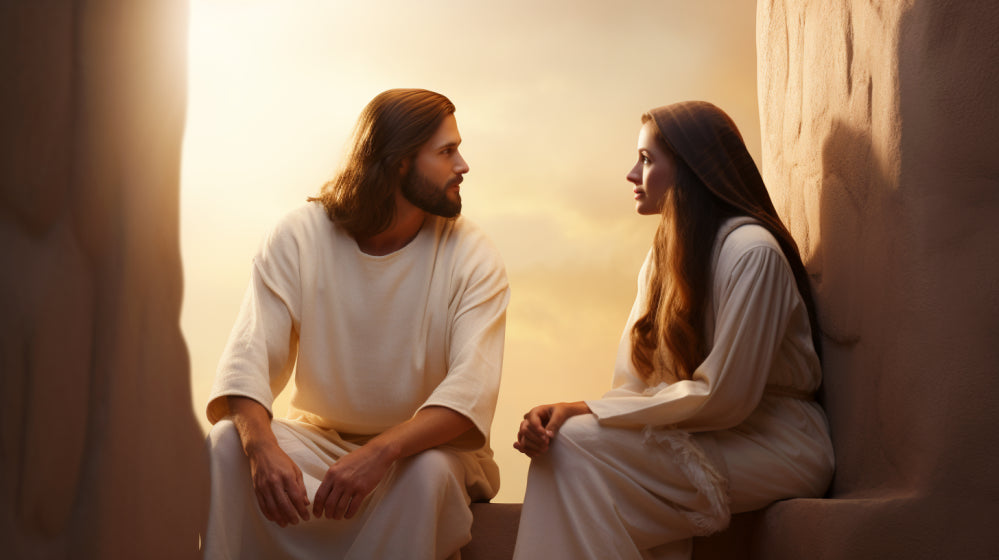
The role of artists in depicting Jesus in a more accurate and inclusive manner
Artists play a role in accurately and inclusively depicting Jesus in their portraits, contributing to a more authentic representation of his identity.- Cultural Sensitivity: By incorporating Middle Eastern cultural elements, such as attire, hairstyles, and skin tones, artists can offer a more historically accurate portrayal of Jesus' appearance.
- Diverse Representation: Artists have the power to depict Jesus in a way that reflects the diversity of the Middle Eastern region, showcasing the various ethnicities and features present in that part of the world.
- Inclusive Imagery: Through their art, artists can challenge historical stereotypes and biases by portraying Jesus in a manner that's inclusive and respectful of the diverse populations of the Middle East.

The Power of Jesus Portraits in Worship
Jesus' portraits hold a profound significance in worship, inspiring deep devotion and reverence among believers. The power of these portraits to evoke spiritual connection and serve as a reminder of personal faith and is a remarkable aspect of religious art. As we explore their impact, we aim to understand how Jesus portraits continue to shape the spiritual experiences of individuals and communities.
The spiritual significance of Jesus portraits
Worshipers find spiritual significance in portraying Jesus through art, allowing for a visual connection to their faith.- Jesus' portrayal as a Middle Eastern man in the artwork evokes a sense of cultural authenticity, resonating with the Eastern origins of Christianity.
- This image serves as a reminder of Jesus' earthly existence, bridging the gap between the ancient Middle Eastern world and the present-day church community.
- The artistic representation of Jesus encourages a deeper understanding of his teachings and the cultural context in which they were delivered.
- The visual depiction of Jesus fosters a sense of inclusivity and diversity within the church, honoring the diverse cultural heritage of believers.

How Jesus portraits inspire devotion and reverence in believers
The visual representation of Jesus as a Middle Eastern man in artwork serves as a powerful reminder of his earthly existence, fostering a deeper understanding of his teachings and the cultural context in which they were delivered. Jesus portraits inspire devotion and reverence in believers, drawing us closer to the embodiment of love, compassion, and sacrifice. When we gaze upon these portraits, we're reminded of Jesus' unwavering dedication to serving others, his acts of kindness and healing, and the profound impact of his teachings. We are invited to personally implement his teachings into our daily lives. Can we truly love as Jesus loves? The Middle Eastern art portraying Jesus captures the essence of his connection to the people of that region, inspiring us to emulate his virtues in our own lives. Through these portraits, believers find a visual representation of the divine presence that guides and strengthens their faith, nurturing a deep sense of reverence and devotion.
Exploring the impact of Jesus portraits on personal faith and spirituality
Studying the impact of Jesus portraits on personal faith and spirituality reveals their profound influence on individuals' spiritual connection and worship experiences.- Jesus artwork can evoke a sense of peace and comfort, drawing us closer to God.
- The art can create a welcoming and grounding atmosphere for contemplation and prayer.
- The art aims to capture the essence of Jesus' teachings, fostering a sense of reverence and devotion, and enriching the worship experience.

Creating and Appreciating Jesus Portraits
As we consider the topic of creating and appreciating Jesus portraits, it's intriguing to explore the role of artists in capturing the essence of Jesus through various techniques and styles. Artists have the unique ability to visually interpret Jesus' life, teachings, and miracles, offering us diverse perspectives to contemplate. Each artwork is a unique testimony- an added art of the great symphony of truth, beauty, and goodness. The visual exploration of Jesus' narrative through art opens up a world of creative expression and interpretation, inviting us to engage with his story in a unique and thought-provoking manner.


Jesus Portraits and the Promotion of Diversity
We believe it's beneficial to encourage diversity in Jesus portraits, reflecting various cultures and backgrounds to promote inclusivity. This advocacy for greater representation of marginalized groups in religious artworks helps create a more inclusive and welcoming environment within global worship communities. Embracing and celebrating diverse representations of Jesus can foster a sense of belonging and acceptance for people from different cultural and ethnic backgrounds.
Encouraging diversity in Jesus portraits to reflect different cultures and backgrounds
Diverse cultural representations of Jesus in art can offer a more inclusive and relatable portrayal to people from various backgrounds. Embracing diversity in Jesus portraits allows for depictions that resonate with individuals from Eastern cultures, reflecting their distinct customs, attire, and environments. Picture a depiction of Jesus integrated with the cultural elements of Asia, Africa, or other regions, showcasing the beauty and diversity of different cultures through art. Envision Jesus portrayed in a manner that resonates with indigenous communities, incorporating their unique traditions and symbols into the portrayal, fostering a sense of inclusion and representation.
Advocating for greater representation of marginalized groups in Jesus artworks
The celebration of diverse cultural representations of Jesus in art not only reflects different backgrounds and traditions but also opens the door to advocate for greater representation of marginalized groups in Jesus artworks. As we strive for inclusivity in Jesus portraits, it can be beneficial to ensure that marginalized communities see themselves reflected in these artistic representations. By portraying Jesus in a way that resonates with various marginalized groups, we can foster a sense of belonging and empowerment. Here's a visual representation of how diverse cultural representations can promote greater inclusivity in Jesus artworks:| Artistic Representations | |
|---|---|
| Refugees | Jesus as a comforting figure guiding refugees to safety |
| Indigenous Peoples | Jesus depicted in traditional indigenous clothing and settings |
| People with Disabilities | Portrayals of Jesus engaging lovingly with individuals with disabilities |
The importance of inclusive representations of Jesus for global worship communities
Representations of Jesus in art play a vital role in fostering inclusivity and diversity within global worship communities. When Jesus is portrayed in a contextually relevant manner, it creates a welcoming environment for individuals from diverse backgrounds. Inclusive representations of Jesus are important for promoting a sense of belonging and acceptance among worship communities worldwide. This can be achieved by showcasing Jesus in various cultural settings, reflecting his Middle Eastern heritage and embracing the diversity of global worship communities. Additionally, inclusive representations of Jesus help to convey the message that all individuals, regardless of their cultural or ethnic background, are valued and integral to the worship community.



